 Google reinvented the wheel when it came to the Chromecast. A small, inexpensive piece of hardware that changed the way we used our television. Can they do it again with a speaker that hopes to change the way we deal with life? Thanks to out friends over at Maplin who can provide you with a Google Home of your own.
Google reinvented the wheel when it came to the Chromecast. A small, inexpensive piece of hardware that changed the way we used our television. Can they do it again with a speaker that hopes to change the way we deal with life? Thanks to out friends over at Maplin who can provide you with a Google Home of your own.
Google have taken a speaker, put their Google Assistant software inside and styled it up to be distinct and attractive in almost every home. From a design point of view, things are impressively well balanced, and if you want to add more design items to your home like candles, there are options like Candles By Design that are great for this.
Home was originally released in the United States 6 months before the UK launch on the 6th of April and must have sold well enough for Google not to kill it in the early stages, much like the Nexus Q. The reason for the delay is an obvious one, the differing services for geographic locations. Alongside adapted the voice recognition software of the assistant to allow the huge variety of vocal tones in the United Kingdom work.
This £129 system really has to impress if it is to be taken seriously as there is some tough competition from Amazon managed to beat Google to the market with the Echo and Dot hardware. Much fuss has been made of these and the ease of triggering the assistant and even some false orders.

Looking around the device, on the sloped top is a touch sensitive panel with a couple of microphone holes. The centre has a rotational dial with different colourings depending on the function being used.

To be back of the Google Home is a mute button, a small LED and the Google Logo.

Below this is the speaker cover, this is a material finish, and is available in various colours. The fabric adds a little more of a homely feel to the unit.

On the bottom is a rubber ring to prevent the unit sliding and the power connector.
The closed comparison of Google’s design is something like an air-freshener. Some might scoff that the top is plastic and unable to change colour, and they might be right. For £129.99 it feels like there could have been perspex with an LED to create a little ambience. Perhaps, this is a look we might see in the future and the device is refined over time.

The two microphones on the top of the unit appear to be the only microphones on the device. When asked, Google Home cryptically replies there is “at least one.” Whilst the Amazon Echo features 7 microphones Google equipped the home with only two. Google Home has never failed to hear me.
Google home 802.11ac Wi-Fi and some Bluetooth capability, however, the Bluetooth has not yet been activated.
Interacting with Google Home couldn’t be easier, you talk, it listens. Once connected to Wi-Fi, sorry no ethernet here, the experience is entirely audio based. Save for a little touch action on the top for volume control. Popping out simple commands receives an appropriate response and if you are unsure what to do, you simply ask that too.
As Google is connected to, arguably, the largest online resource of search requests you might think there is little it can;t answer. Unfortunately, there is. Questions and requests cannot be too complicated, the Assistant will respond with a standard statement that things are being worked on and she cannot do. When I say she, the Assistant admits she cannot talk like a “bloke” at the moment.
Much has been made of the ability to continue a line of questioning on a particular topic, for example, “Who is the President of the United States of America?” the Answer with a little extra information if give. Following this with “How old is he?” meets with silence. I had been under the impression this flow of questioning was a thing, however, it would seem not, for the time being at any rate.
To wake the device with “Okay Google” or “Hey, Google”. Two phrases worked deep into the bowels of the system, and the user is unable to change, so if your dog is called “Blokey Doodle”, chances are Google Home is going to wake up and you are going to give your Dog a more sensible name. Thankfully the trigger words are harder to accidently use that Alexia from Amazon that seems to be leading to light pericombobulations amongst users, but it can cause other friends and family’s phones to jump into action.
Once Google Home’s personality has been summoned, four coloured dots dance on the top of the unit as it listens to you and formulates a reply. Google Home consults Google’s Knowledge Graph and uses a superb vocabulary to generate a reply. If there is a fairly concrete record online Google is able to answer most factually orientated questions and states it’s source as backup, for example, “according to Wikipedia.” Complex questions can stump the little piece of plastic, however, whilst is tries and you can’t help but feel sorry of Google Home the first couple of times you stump it.
However, understanding your knowledge needs is not Google Home’s only trick. You can connect to Spotify, remember particular numbers or phrases, set alarms and timers, and give you a basic crash course in languages. Home plugs itself into Maps and gets to know what is around you, being able to offer tips on where to find local services.

At this the time of writing, Google Home has seen a couple of firmware revisions, however, nothing major. My experience was based on feature available at launch. The main app to interact with Google Home is the newly redressed Chromecast app, now titled Google Home. This really only serves as an aid for setup, inspiration and troubleshooting. There is very little you can actually do from here.

The settings are where most of the action is. You can configure the News source from a limited range of choices, step a Shopping List as a default when you realise you are out of Milk and some other rather standard settings.


After this, the app serves to help you get the most out of Home. recommending services on Google Play and audio prompts it for the handiest features. There is no definitive list and search the web will find many more interactions not listed here.
Google Home manages to be both things, an assistant and a toy. Only time will tell if it will stick like the Chromecast, or will it fade away into obscurity. With the Google Assistant being ready for action on your phone it will make the draw of Google Home ever more difficult, however, it’s something that at least needs to be tried to see if it actually fits.
Over the last fortnight, I have been considering adding two more units to you home as the Home has become an invaluable asset to my daily routine. From reading me the headlines and weather outlook in the morning to reminding me of appointments to reminding me how to spell pericombobulations for this review. Despite Home sitting beside some computer speakers, I find myself throwing the oddly podcast over it as the sound quality is perfectly acceptable for voice. And I admit that I have played the inbuilt trivia game more than one.
However, will it last? Once you have tired of trying to catch it out and finding Easter Eggs there is life in the platform. I can think of a number of little additions that will prove invaluable to be down the road. Google Home is continually evolving and I love the idea that this will be here beside me. Certainly my phone can do it, however, the trigger has to be turned on and this doesn’t help battery life.
Google Home might occupy a small amount of space, however, it offers some big opportunities. Many thanks to Maplin for providing a unit for this review, check out their listing if we have sold you on Google Home.
 Glovax is an interesting Indiegogo campaign I have managed to get ahold of ahead of time. These striking gloves brag they can tolerate more abuse than any other adventure glove including, cut resistance, anti-skidding, abrasion-resistance, water & oil resistance, flexibility, and comfort!
Glovax is an interesting Indiegogo campaign I have managed to get ahold of ahead of time. These striking gloves brag they can tolerate more abuse than any other adventure glove including, cut resistance, anti-skidding, abrasion-resistance, water & oil resistance, flexibility, and comfort! 
































































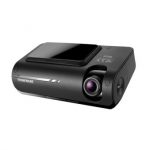

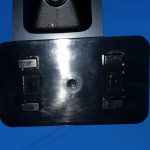













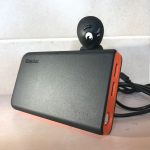



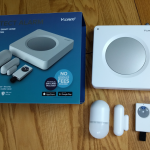





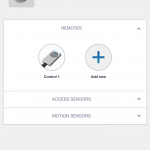
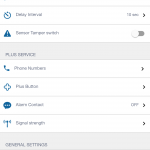

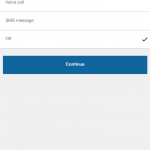

Connect
Connect with us on the following social media platforms.